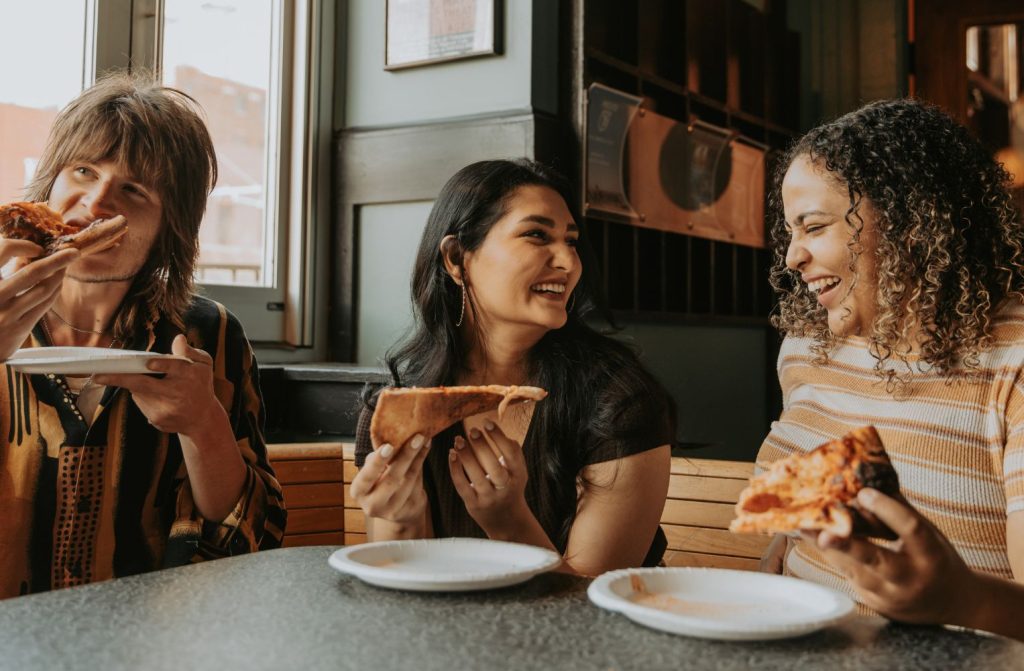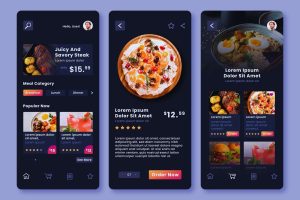In the competitive and appetizing world of dining, organic word-of-mouth is no longer enough. For a restaurant looking to thrive and attract high-value customers, online advertising has become an essential ingredient.
What are “high-value customers” in a restaurant?
Before diving into strategies, it’s crucial to define who we want to attract. A high-value customer isn’t necessarily the one who spends the most in a single visit—although they often do. They are customers who:
- Visit more frequently: They are your repeat customers.
- Spend more per visit: They tend to order appetizers, desserts, premium drinks, and more elaborate main courses.
- Are brand advocates: They leave positive reviews, recommend you to friends and family.
- Have a high Customer Lifetime Value (CLTV): Their total contribution to your revenue over time is significant.
- Align with your value proposition: They appreciate what you offer (quality, ambiance, exclusivity).
Attracting these customers means not only increasing your revenue but also building a solid base of loyal diners who will drive long-term growth for your business.
1. Advanced Segmentation: Know Your High-Value Diner and Find Them Online
The key to attracting high-value customers is deeply understanding them and then targeting them with surgical precision. Online advertising offers segmentation tools that traditional advertising could only dream of.
Steps for advanced segmentation:
- Define your high-value “Buyer Persona”:
- Demographics: Age, income level, occupation, location (especially affluent neighborhoods like Poblado, Provenza, Laureles in Medellin).
- Psychographics: Interests (gourmet gastronomy, wines, cultural events, travel), lifestyle (business dinners, special occasions, active social life), values (sustainability, exclusivity, unique culinary experience).
- Consumption behavior: What type of restaurants do they visit? How often? What do they value most: price, quality, ambiance, exclusivity?
- Demographics: Age, income level, occupation, location (especially affluent neighborhoods like Poblado, Provenza, Laureles in Medellin).
- Use your restaurant’s data:
- Sales history (POS): Identify buying patterns of your most profitable customers. What dishes do they order? Which days do they visit?
- Reservation systems: Gather info on visit frequency and group size.
- Loyalty programs: Data from your most active members is pure gold.
- Sales history (POS): Identify buying patterns of your most profitable customers. What dishes do they order? Which days do they visit?
- Advertising platforms and their segmentation options:
- Google Ads: Allows very specific geographic targeting (radius around your restaurant, postal codes), interests (gastronomy, travel, leisure), household income (in some countries), and demographics. You can bid on “luxury” or “gourmet” keywords.
- Facebook and Instagram Ads: Offer incredibly granular targeting based on interests (e.g., “French food,” “fine wines,” “culinary experiences”), behaviors (frequent travelers, high-income users), demographics, and location. You can create custom audiences from your customer lists or “lookalike audiences” to find similar people.
- Waze Ads: Ideal for proximity advertising, showing your restaurant to nearby drivers. You can target by destination (if it’s a stopover restaurant) or specific areas.
- Google Ads: Allows very specific geographic targeting (radius around your restaurant, postal codes), interests (gastronomy, travel, leisure), household income (in some countries), and demographics. You can bid on “luxury” or “gourmet” keywords.
Key to success: Don’t bombard everyone with the same message. Tailor your ads to the high-value segment you are targeting.
2. Campaigns Focused on Experience and Value, Not Just Discounts
High-value customers are not primarily attracted by massive discounts. They seek quality, exclusivity, a unique atmosphere, and a memorable experience. Your online advertising should reflect this.
Content strategies to attract high-value customers:
- Emphasize quality and ingredients: Highlight the origin of your products, the chef’s mastery, the originality of your dishes. Show images of fresh ingredients and preparation processes.
- Ambiance and atmosphere: Convey the feeling of your restaurant. Is it intimate, vibrant, elegant, casual-chic? High-quality photos and videos are essential.
- Stories and values: High-value customers often connect with the restaurant’s story, the chef’s passion, or values like sustainability, fair trade, or support for local producers. Tell your narrative.
- Exclusive offers, not just discounts: Instead of “10% off,” offer “A complimentary glass of our house wine with your dinner,” “Access to our monthly wine tasting for select members,” “Special tasting menu by invitation only.”
- Unique events and experiences: Promote pairing nights, themed dinners with guest chefs, cooking classes, high-level live music.
- Testimonials and reviews: Highlight satisfied customer reviews that validate the high-level experience you offer.
Channels and ad formats:
- High-resolution image and video ads: Invest in professional photography and videography. Visual quality is non-negotiable.
- Carousel ads on Instagram/Facebook: Showcase multiple dishes or aspects of your ambiance in a single ad.
- Collection ads: Allow users to browse your “products” (dishes) directly from the ad.
- Stories and Reels/Shorts: More immersive and authentic content that can show behind-the-scenes glimpses of your excellence.
3. Retargeting and Remarketing: Persuade Those Who Have Already Shown Interest
Not every customer books or visits on the first interaction. Retargeting (or remarketing) is one of the most cost-effective online advertising strategies, as it targets users who have already shown some level of interest in your restaurant.
How it works and what it offers:
- Tracking pixels: Install the Facebook/Meta pixel and Google Ads tag on your website. This lets you “tag” your web visitors.
- Remarketing audiences: Create audiences based on user behavior:
- Visitors to your menu page.
- People who started a reservation but didn’t complete it.
- Customers who visited your “Reservations” or “Events” page.
- Users who engaged with your social media posts.
- Visitors to your menu page.
- Personalized ads: Target these audiences with specific ads, for example:
- For those who abandoned the reservation cart: “Don’t miss your table! Complete your reservation today.”
- For those who viewed your menu: “Discover the taste of our [signature dish]. We’re waiting for you!”
- For those who engaged with an event post: “Last spots available for our pairing dinner.”
- For those who abandoned the reservation cart: “Don’t miss your table! Complete your reservation today.”
- Incentive offers: A small personalized incentive can be the final push. “Complete your reservation and receive a complimentary appetizer.”
Tip: Retargeting is especially effective for high-value customers who often do thorough research before deciding.
4. Collaborations with High-Impact Influencers and Micro-Influencers
Digital word-of-mouth is very powerful, and influencers are its megaphones. To attract high-value customers, seek influencers who truly connect with your niche and have an audience that values quality and experience.
Keys to effective collaboration:
- Identify the right profile: It’s not about follower count but about the quality and engagement of their audience. Look for refined foodies, wine connoisseurs, food critics, or lifestyle influencers who value exclusivity and premium experience.
- Focus on experience, not just the photo: Invite the influencer to live a full experience at your restaurant. Let them try multiple dishes, meet the chef, feel the ambiance. Their review will be more authentic and persuasive.
- Valuable content: Ask them to create content that goes beyond a simple post. A Reels/TikTok video showing a dish’s preparation, a story about the menu’s inspiration, or a live session tasting your food.
- Transparency: Ensure the collaboration is transparent and complies with advertising regulations.
- Measurement: Ask the influencer to include a call to action (e.g., “Book your table mentioning my name” or a tracking link) to measure impact.
5. The Power of SEO and Google My Business for a Complete Attraction Cycle
Although online advertising is paid, you can’t ignore organic SEO. Good SEO and an optimized Google My Business (GMB) profile are the perfect complement that will bring you high-value customers continuously and at a lower long-term cost.
Reinforcing with SEO and GMB:
- Optimization for “luxury” or “gourmet” searches:
- Keywords: “gourmet restaurant Medellin,” “luxury dinner Provenza,” “starred restaurant in [your area],” “premium culinary experience.”
- Web content: Create pages or sections on your site highlighting your haute cuisine, sommelier, exclusive wines.
- Keywords: “gourmet restaurant Medellin,” “luxury dinner Provenza,” “starred restaurant in [your area],” “premium culinary experience.”
- Google My Business as a high-value magnet:
- High-quality photos: Emphasize professional visuals.
- Reviews: Detailed reviews about service quality, original dishes, and exclusive atmosphere resonate with high-value clients. Respond to all reviews.
- Attributes: Ensure your GMB profile reflects attributes like “Fine dining,” “Fine wines,” “Romantic atmosphere,” etc.
- GMB posts: Use this feature to announce private tastings, tasting menus, or exclusive events.
- High-quality photos: Emphasize professional visuals.
- Authority content generation: A blog with articles about gastronomic trends, wine pairings, culinary expert interviews, or stories about exotic ingredients will position your restaurant as an authority in your niche, attracting a more sophisticated audience.
- Quality link building: Seek backlinks from prestigious gastronomy blogs, lifestyle magazines, and high-end restaurant guides.
Online Advertising for Restaurants: H1, Meta Description, and Meta Tags
To make this content a magnet for search engines, here’s the optimization of the key elements:
- H1: Online Advertising for Restaurants: How to Attract High-Value Customers
This H1 is direct, specific, and contains the main keywords: “Online advertising for restaurants” and “attract high-value customers.” It’s the most important title on the page. - Meta Description:
An attractive meta description is crucial to increase Click-Through Rate (CTR) from search results. It should be concise (approx. 150-160 characters), persuasive, and relevant.
Example Meta Description:
“Discover key online advertising strategies for restaurants and learn how to attract high-value customers. Maximize your revenue and fill your tables with premium diners. Complete guide!” - Meta Tags (Keywords):
Although Google has reduced their direct importance in ranking, it remains good practice to include relevant keywords.
Example Meta Tags (keywords):
online advertising restaurants, attract high-value customers, digital marketing restaurants, premium customers, advanced segmentation restaurants, retargeting restaurants, gastronomy influencers, luxury restaurant SEO, Google Ads restaurant advertising, Facebook Ads food campaigns, high-income customers
Serving Excellence in Every Click
Attracting high-value customers to your restaurant through online advertising is both an art and a science. It requires deep audience understanding, precise segmentation strategy, messages that highlight experience and value, and flawless execution on digital platforms.
By integrating these five keys—advanced segmentation, experience-focused campaigns, smart retargeting, strategic influencer collaborations, and a strong pillar of organic SEO—you will not only optimize your advertising investment but transform your restaurant into a magnet for diners who seek not just food but an unforgettable experience. Are you ready to elevate your marketing strategy and see how digital excellence translates into full tables and a high-value clientele?
At Digisap, we help you develop a tailored SEO and digital marketing strategy so your restaurant becomes the top choice for diners in your area — not your competitors.
Click here to schedule your free consultation and take your restaurant to the next level





